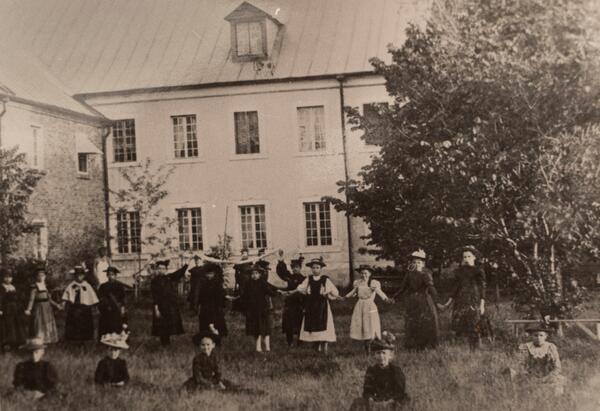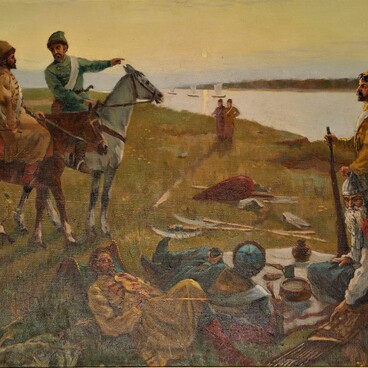Physical education was one of the important disciplines in the women’s colleges in Sarepta. Classes were held in the open air in the courtyard of the colleges during the warm season. It is precisely this activity of the students of the Sarepta school that is captured in a photograph of the 19th century, presented in the museum’s exposition.
The colonists of Sarepta were the Hernguters, representatives of the Protestant movement in Christianity. The Hernguthers considered the Youth as conductors of their ideas in the future and pinned great hopes on the young people. Education was mandatory and prescribed by the charter. Thus, the community colleges in Sarepta were exemplary, the best in the region. The level of education and upbringing was high there. The maintenance of schools was carried out on community grants and donations from individuals.
The first women’s colleges in Sarepta appeared in 1778. The girls studied the following disciplines: Law of God, history, German grammar, arithmetic, geography, drawing, calligraphy, music, science and various women’s handicrafts. It was obligatory to teach housekeeping with practice in various types of ‘women’s’ work.
Sarepta had its own public library. Natural science classes for schoolchildren were held on the basis of an extensive herbarium collected in the settlement, as well as a chemical laboratory, factories and other SarEpta enterprises.
The lack of Russian language teachers in women’s colleges was one of Sarepta education weaknesses. Perhaps the reason was that it was simply not necessary, since the colony’s connection with the outside world was mainly supported by men.
The educational process was based on the idea that children are “the property of Jesus Christ, which he bought and acquired with his holy blood.” According to this concept, the younger generation of Sareptians was brought up in a highly moral and religious spirit, and in violation of the traditional pedagogical principles of that time.
Thus, corporal punishment was abolished, contrary to established pedagogical norms. The caregivers of the respective corporations - unmarried sisters, single brothers, widows and family brothers - were responsible for the young people upbringing.
The colonists of Sarepta were the Hernguters, representatives of the Protestant movement in Christianity. The Hernguthers considered the Youth as conductors of their ideas in the future and pinned great hopes on the young people. Education was mandatory and prescribed by the charter. Thus, the community colleges in Sarepta were exemplary, the best in the region. The level of education and upbringing was high there. The maintenance of schools was carried out on community grants and donations from individuals.
The first women’s colleges in Sarepta appeared in 1778. The girls studied the following disciplines: Law of God, history, German grammar, arithmetic, geography, drawing, calligraphy, music, science and various women’s handicrafts. It was obligatory to teach housekeeping with practice in various types of ‘women’s’ work.
Sarepta had its own public library. Natural science classes for schoolchildren were held on the basis of an extensive herbarium collected in the settlement, as well as a chemical laboratory, factories and other SarEpta enterprises.
The lack of Russian language teachers in women’s colleges was one of Sarepta education weaknesses. Perhaps the reason was that it was simply not necessary, since the colony’s connection with the outside world was mainly supported by men.
The educational process was based on the idea that children are “the property of Jesus Christ, which he bought and acquired with his holy blood.” According to this concept, the younger generation of Sareptians was brought up in a highly moral and religious spirit, and in violation of the traditional pedagogical principles of that time.
Thus, corporal punishment was abolished, contrary to established pedagogical norms. The caregivers of the respective corporations - unmarried sisters, single brothers, widows and family brothers - were responsible for the young people upbringing.



